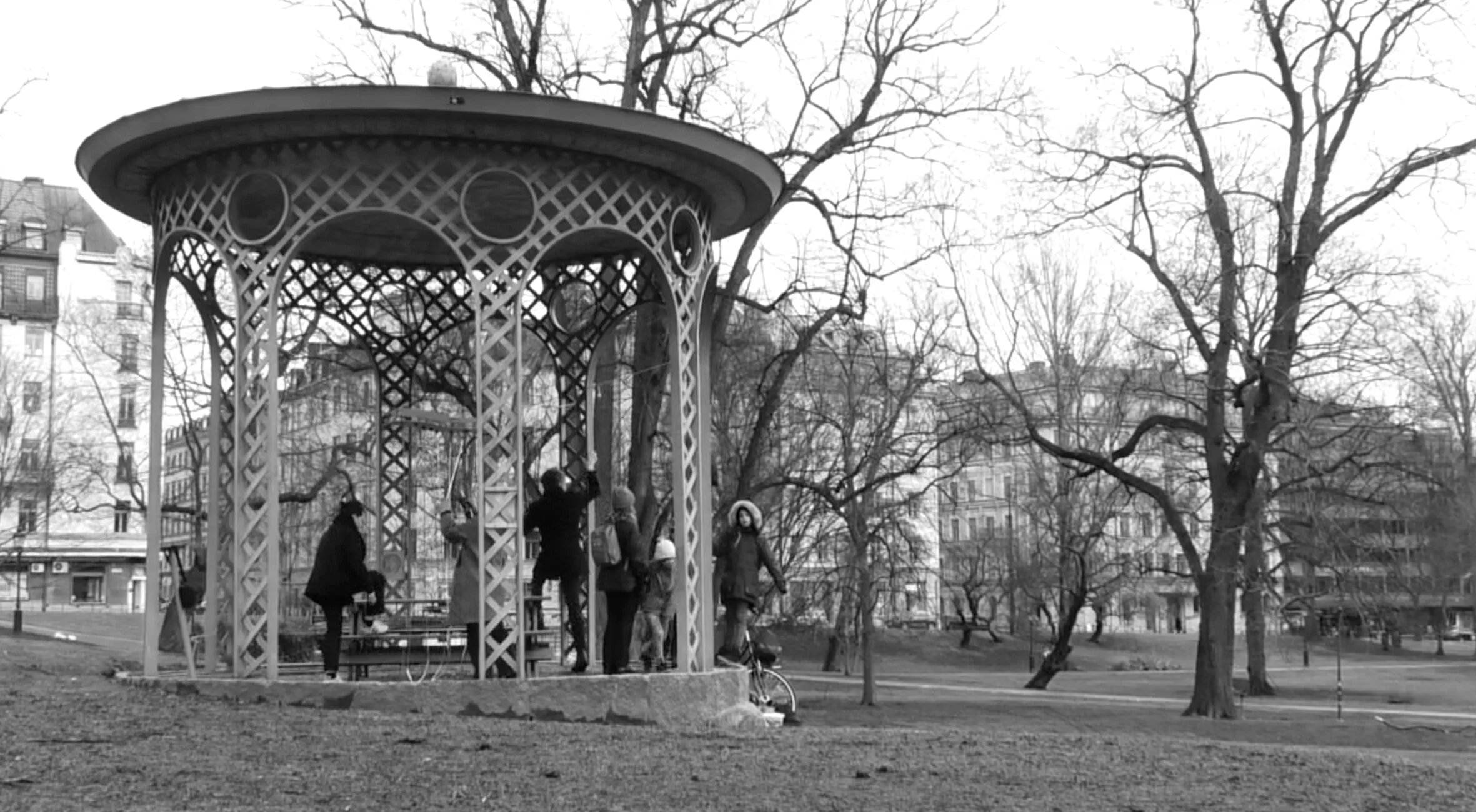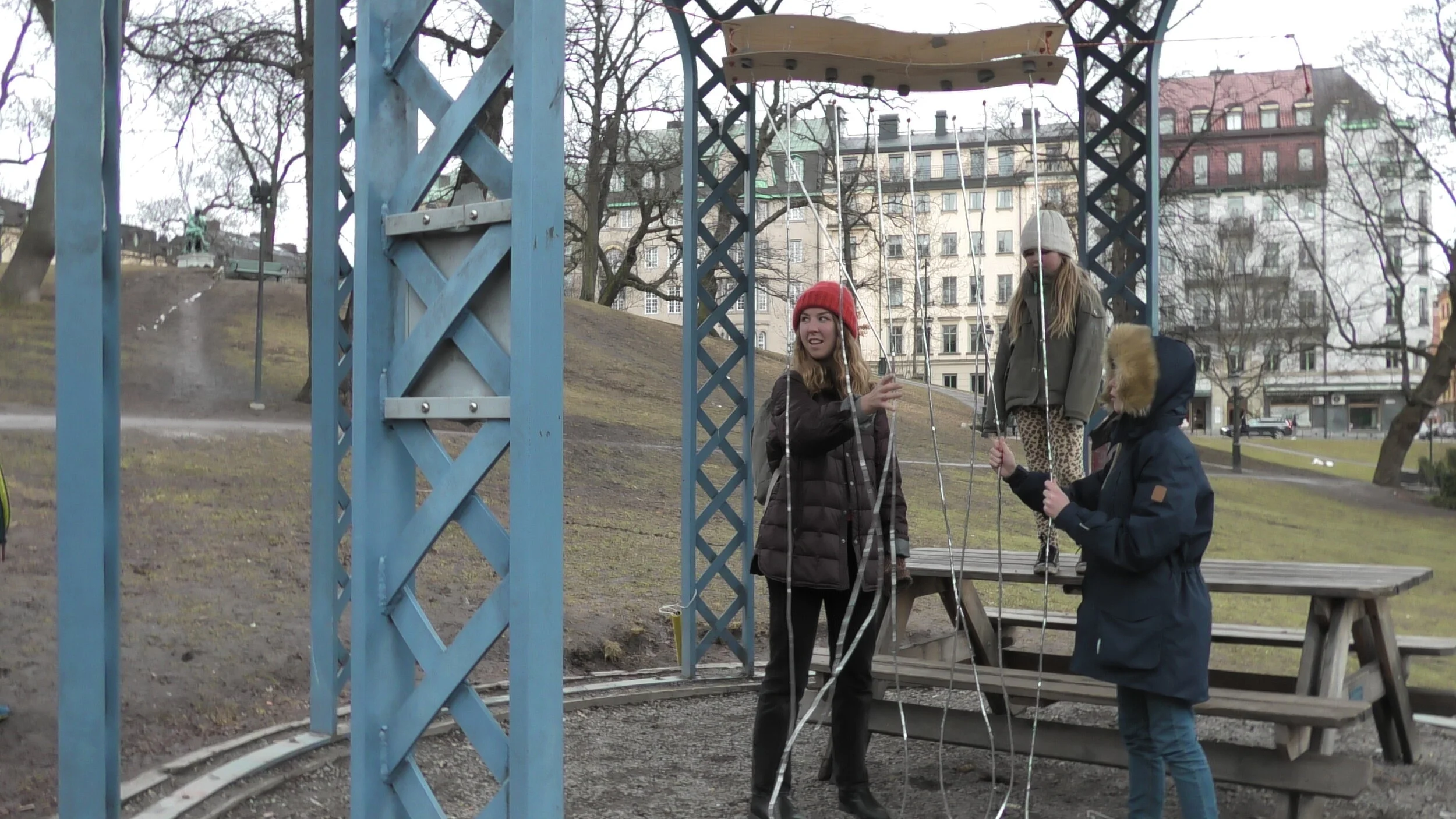SoundSpace ~
An Exploratory Outdoor Sound Synthesis
PROJECT
KTH Royal Institute of Technology,Physical Interaction Design and RealizationTEAM
Alice Borg Thorhildur AsgeirsdottirAxel MeurlingDATE + DURATION
2021, 8 weeksTOOLS
Pure Data, CPP, Bela Board, MPR131 Touch Sensor, MiroABOUT
As a part of the course, Physical Interaction Design and Realization at KTH, my team and I were given a design brief to create an interactive installation for the Swedish winter playground. The word playground is usually associated with young children, which is reflected in HCI research that mainly covers young children and their parents. This notion challenged us, and the focus was directed towards teenagers. The project resulted in SoundSpace, an exploratory outdoor sound synthesis. A space that invites teenagers and their friends to explore sound, be creative, and simply hang out.
PROCESS
The design process was highly exploratory and a lot of emphases was directed on acquiring new skills and techniques. To keep structure in the creative space, the software Miro was used. Mood boards, brainwriting sessions, dot voting, road maps, and more were created on the platform to enable a visual understanding and overview of the process and its development.
The design process involved multiple iterations, and the initial design idea changed several times throughout the process. To ensure a functioning final prototype including the most essential interaction, i.e touch, and sound, an MVP was formulated. Key interactions for the MVP were prioritized, to later continue with other desired features. To reach our goal we engaged in low-fidelity prototyping, material exploration, bodystorming at the given location, design iterations based on gathered insights, construction of a final, large-scale prototype, and user-testing.
UX–CHALLENGES
One of the main UX–challenges was to create an interesting, yet appealing sound in Pure Data, that worked well with different materials used in the construction. The sound was so different depending on the quality of the speaker and different combinations of material. Sound is further very subjective, and even if the goal was to attract teenagers, emphasis was directed on not being too focused on the latest trend, as it would counteract a sustained use of the installation.
Another UX–challenge referred to the Swedish weather conditions, and the fact that the installation was going to be located outdoors. ‘Cold, wet and dark’ is the slogan for a Swedish winter, which means that users will be wearing gloves. The use of gloves hindered us from relying on having skin conductivity in the interaction with the strands. A new solution regarding the interaction was thus needed.
RESEARCH CONCLUSIONS
Insights from the process affected the initial design idea a lot. One of these insights refers to the challenge of not relying on skin conductivity in the interaction. To solve the problem, a new construction was implemented. Instead of having the strands conductive all the way through, a box with conductive circles for each strand was created. We further realized that Swedish winters are not solely cold, they are also wet. Consequently, to ensure that the materials used could manage to get wet without crashing, a small experiment was executed under close observation. The results from the experiment indicated that the e-textiles used were not affected by getting wet.
The material exploration also revealed the most compatible materials. Conductive fabric and steel wire proved to be the best combination, regardless of configuration. The new insight supported the final construction of the prototype that could accommodate eight strands and conductive circles. The structure included two plywood planks through which the strands were threaded, with one plank serving to attach the strands from the top and the other featuring the conductive fabric enmeshment where the steel wire comes into contact to generate the sound.
The conductive fabric was chosen as the material for the circles as it allows for a deeper interaction, as the resistance of the circuit changes with the compression of the fabric. Consequently, we could detect how hard the users were pulling the strands, and adjust the synthesized sound accordingly. The strands were further wrapped with reflective material to create a reflection effect when hit with light. The reflective material adds sturdiness to the strands, enhancing the feeling and experience of interacting with the installation.
The user-testing generated fruitful insight regarding how the users actually interacted with the installation, which was different from what we anticipated. The users seemed to more naturally interact with the installation statically, rather than full-body interaction, often standing in one place and delicately interacting with one or two strands at a time. Users were incredibly interested in understanding how the sound was generated in relation to their movement. A notion that supports the initial goal of creating an exploratory installation that supports open-ended play.
UX–SOLUTION
SoundSpace – an exploratory outdoor sound synthesis became the final UX solution to the given brief. Sound is generated by moving the strands hanging from a construction in the ceiling. The interaction can be experienced by an individual user but becomes more complex the more participants there are, as more sounds are generated. To counteract the Swedish winter's darkness, the strands were wrapped with reflective material to create a reflection effect when hit with light. SoundSpace ultimately enables a space for teenagers to hang out with their friends and be creative by actively exploring different sounds together in an open-ended way.
REFLECTIONS + TAKEAWAYS
We successfully reached the goal to create an MVP that supported our key aspects in the design process, however, the notion that I will bring with me is how much the physical and explorative nature of the project helped me to gain new skills and techniques. I was honestly a bit hesitant when entering the project because it was so different from what I’m used to. Electronics, sound synthesis, and industrial design, all felt exciting but also distant. This experience truly taught me the importance of pushing your boundaries and stepping out of your comfort zone. It’s there, and only there, you develop and receive a more holistic understanding of design and its implications.
For future research, it would be interesting to continue exploring the implementation of lights and to differentiate sounds depending on movements, so that squeezing, pulling, gently touching, etc, all generate different feedback. Another interesting direction refers to accessibility. How to make the installation accessible independent of abilities. The use of lights, vibrations, and sound could make the experience interesting for everyone.








